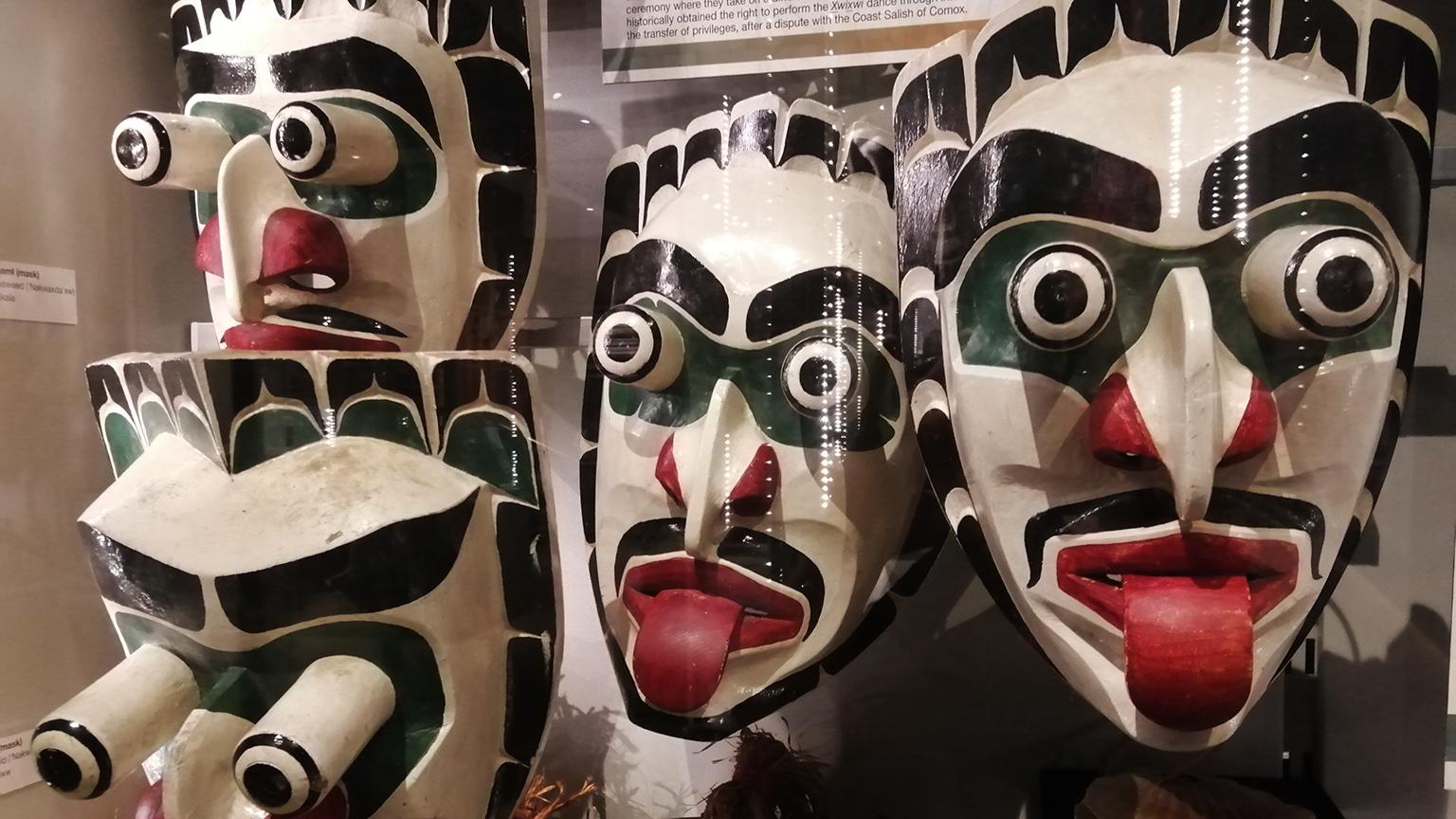Developing approaches to decolonisation, repatriation and working with indigenous communities

Curator and Headley Fellow Joanne Anderson discusses how her fellowship enabled her research into the Native North American artwork at the Great North Museum, alongside visits to the Haida Nation in Canada to explore the provenance and significance of objects in the museum's collections.
As a recipient of a Headley Fellowship in 2019, I had the opportunity to study Native North American artwork in the Great North Museum’s World Cultures collection. These were objects I’d long admired, but as my background was based in Roman archaeology I had little knowledge of these items or of the wider discipline of ethnography.
The Headley Fellowship allowed me to take the time to pursue an in-depth research project into this collection, so I could learn not just about the objects, but also about the people who created them and their cultures and histories. While I knew this was a wonderful opportunity for my professional development, I could not imagine the impact the fellowship would have.
Expert advice from professionals
A major part of my project consisted of visiting museums that incorporated collections originating from Native American and First Nations communities. While these visits allowed me to learn from the displays, I was also able to meet with the curators who talked me through their roles and how they cared for their ethnographic collections, providing excellent advice and thoughtful insights.
While the UK museums and curators supported me enormously, it was visiting museums in Canada that helped me recognise the issues that surround indigenous artefacts in museums. I travelled to Vancouver, visiting the Museum of Vancouver and the Museum of Anthropology. Here, I witnessed first-hand how curators work directly with First Nations so that they can reclaim their heritage through increased representation and repatriation.
Visiting the Haida Nation
The importance of indigenous communities restoring their culture was even more apparent when I flew out to the islands of Haida Gwaii, located off the west coast of Vancouver. This is the home of the Haida First Nations, and I spent time at the Haida Heritage Centre at Kay Llnagaay.
Here, I learned that many ancestors and artefacts of the Haida Nation have been repatriated back to the islands from museums and collections all around the world and what this means to them. The Haida Nation are a vibrant people with a wonderful culture. Yet this culture was for a long time in danger of disappearing forever. Through the determination of the community, the nation is reclaiming its material culture from museums around the world.
Visiting Haida Gwaii was a truly extraordinary and emotional experience. I met many locals, including Haida, who took time to tell me stories about the islands, impressing upon me how spiritual the islands were, and the culture that emanated from them. As a curator, it was invaluable to be able to see and understand how important it is for indigenous communities to recover their ancestors and objects in order for their culture to flourish once more. I finally understood that the objects in my research project were part of a much bigger story.
An immediate impact
After talking to curators in Vancouver, it quickly became apparent that having a good repatriation policy was crucial in the event of an indigenous community approaching a museum about returning an object to its place of origin. On finishing my fellowship project, I produced the Great North Museum’s first full Repatriation Policy.
A curator at the Museum of Anthropology in Vancouver who I'd met during my fellowship was kind enough to peer review the initial drafts. As she had many years of experience in repatriating items back to First Nations in Canada, she was able to point out sections that required more thought or clarity in order for us to produce a good working document.
Since the end of my fellowship, work on the World Cultures collection as a whole has gathered pace. The collections history of the Great North Museum spans over 250 years, and as I began to discover during my project, many of the objects are linked with Britain’s colonial past.
As part of a museum-wide decolonisation program, I have been assessing the objects on display in our World Cultures Gallery, reviewing the interpretation and identifying objects that may have a problematic provenance. A key outcome of this work will be a complete redisplay of the gallery. Thanks to the work I did during my fellowship, I now have the knowledge, experience and assurance to be able to undertake this research.
Confident curatorship
On a personal note, the impact the fellowship had on me in terms of increasing my confidence cannot be overstated. Curating a World Cultures collection with no ethnographic background or training can be a daunting prospect. The fellowship gave me the resources to address this, learn new skills and acquire new knowledge.
Consequently, I feel much more confident and adept as a curator. As we now work to decolonise our museum, I am extremely grateful that the fellowship gave me a chance to understand the issues that surround not just the native North American collection, but also objects from indigenous communities around the world.
The Headley Fellowships 2021 are now open for applications until 30 July
Joanne Anderson is the Assistant Keeper of Archaeology at the Great North Museum: Hancock